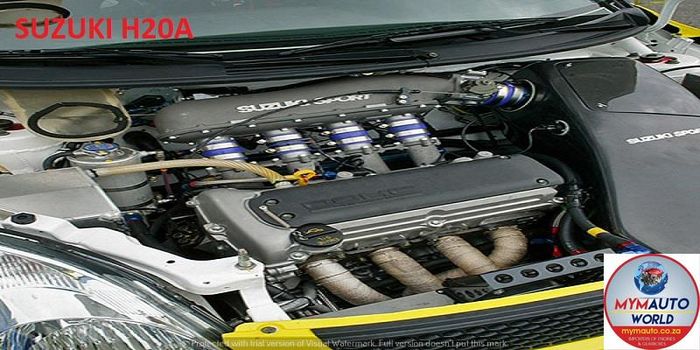Opel Corsa Engine: Common Issues and How to Take care of Them
Opel Corsa Engine: Common Issues and How to Take care of Them
Blog Article
Exploring the Inner Workings of a Compact Lorry's Engine System
As drivers, we typically take for given the intricate processes that take place within the confines of our vehicle's engine system. In this exploration of a small vehicle's engine system, we will unravel the inner operations of this mechanical harmony, dropping light on the enigmas that drive us ahead on our day-to-day trips.
Burning Process Introduction
The combustion process in a small automobile's engine system is a critical mechanism that efficiently transforms fuel into energy to power the vehicle. This procedure takes place within the combustion chamber of the engine, where fuel and air mix, spark, and generate controlled explosions. The burning procedure contains four main phases: intake, power, exhaust, and compression.
Throughout the consumption phase, the piston moves downward, attracting in a blend of air and fuel right into the burning chamber. This descending activity creates the power required to drive the lorry. This cyclic burning process is basic to the procedure of a portable vehicle's engine system, guaranteeing efficient energy conversion for propulsion.
Piston and Cylinder Interaction

The piston's accurate fit within the cyndrical tube is essential for keeping optimum compression and stopping energy loss throughout combustion. Tight clearances between the piston and cyndrical tube wall surfaces ensure effective securing, permitting the piston to relocate efficiently without permitting gases to leak past. Correct lubrication is also vital to lower friction and use in between these elements, boosting long life and performance.
In addition, the design and products used in producing the piston and cyndrical tube effect engine effectiveness and durability. Modern engines typically use light-weight yet durable materials like light weight aluminum alloys for pistons and cylinder liners to lower inertia and enhance thermal efficiency. Overall, the unified communication between the piston and cylinder is essential to the engine's capability and overall performance.
Gas Injection System Performance
Fuel injection systems in compact car engines play a vital function in exactly supplying gas to the combustion chamber for efficient and regulated ignition. The fuel injection system functions by infusing gas right into the combustion chamber at the optimum minute during the engine's procedure (opel corsa engine). This precise timing makes certain that the fuel mixes equally with the air for correct combustion, bring about boosted fuel efficiency and decreased emissions
There are primarily two sorts of gas shot systems made use of in portable lorry engines: port fuel injection (PFI) and straight fuel shot (DFI) PFI systems infuse gas right into the consumption port prior to the intake valve, while DFI systems infuse gas directly right into the burning chamber. Both systems have their benefits, with DFI supplying much better gas atomization and PFI offering a more cost-effective remedy.
Recognizing Engine Air Conditioning Systems
Effective operation of a compact car's engine depends heavily on the efficiency of its cooling mechanisms. Engine air conditioning is vital to avoid getting too hot, which can cause severe damage and decreased performance. The air conditioning system in a compact car usually is composed of several elements working together to regulate the engine temperature level. One vital component is the radiator, which utilizes coolant to soak up warmth from view website the engine. As the hot over here coolant flows through the radiator, it releases warm right into the air, cooling down before returning to the engine. The water pump circulates the coolant via the engine and radiator, guaranteeing a consistent circulation to regulate temperature level. Furthermore, the thermostat assists manage the coolant flow to keep optimal engine temperature. Some lorries additionally have cooling down fans that turn on when extra cooling is needed, such as during hefty traffic or heat. Recognizing these engine air conditioning mechanisms is important for keeping the performance and longevity of a portable vehicle's engine system.

Exhaust System Elements Explained
The optimum performance of a portable car's engine cooling devices depends on a complementary system known as the exhaust system, which comprises numerous vital elements for making certain effective exhausts and engine performance. The exhaust manifold collects exhaust gases from the engine's routes and cyndrical tubes them to the catalytic converter.
One critical element of the exhaust system is the oxygen sensor, which keeps track of the oxygen levels in the exhaust gases to help regulate gas usage and ensure optimum engine efficiency. opel corsa engine. Additionally, the resonator you can find out more may be present in some exhaust systems to decrease noise degrees. Overall, the exhaust system plays a crucial duty in preserving engine effectiveness, lowering damaging exhausts, and making sure a quieter driving experience for compact car proprietors

Final Thought
To conclude, the portable car's engine system is a complicated mix of components that collaborate to help with the combustion procedure, convert gas into energy, and get rid of waste gases. Recognizing the inner operations of the engine system, including the piston and cylinder communication, fuel injection system, engine air conditioning systems, and exhaust system elements, is important for keeping optimal performance and efficiency of the car.
The combustion process in a portable lorry's engine system is a crucial system that efficiently transforms gas into energy to power the vehicle.Gas injection systems in compact car engines play a crucial duty in exactly supplying gas to the combustion chamber for regulated and efficient ignition.There are mostly two kinds of fuel shot systems utilized in portable lorry engines: port gas shot (PFI) and direct fuel shot (DFI) Understanding these engine air conditioning mechanisms is essential for preserving the efficiency and durability of a portable lorry's engine system.
The ideal performance of a portable car's engine cooling mechanisms depends on a complementary system recognized as the exhaust system, which comprises numerous essential elements for guaranteeing reliable exhausts and engine efficiency.
Report this page